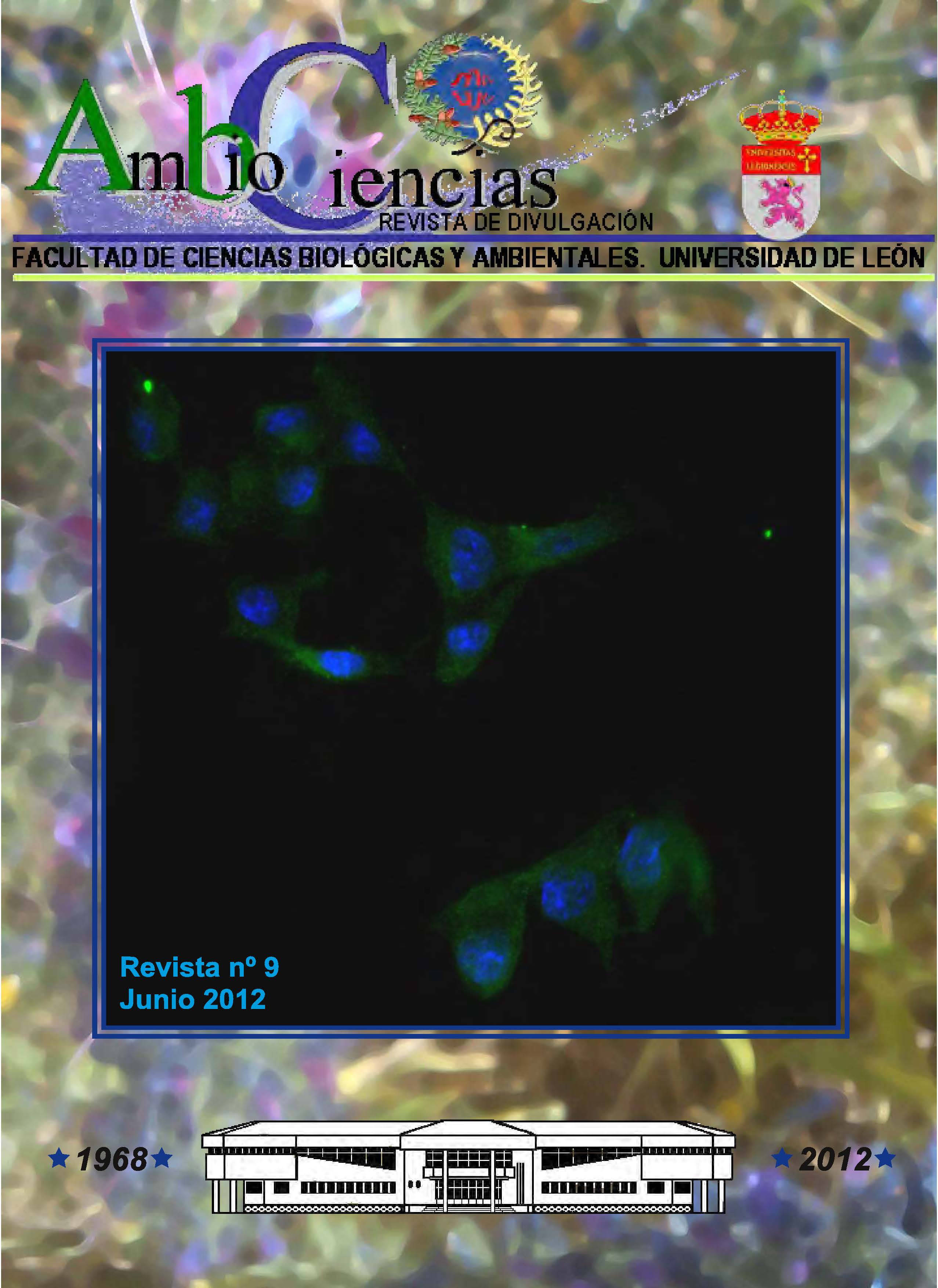Nuevas terapias dirigidas para el tratamiento del cáncer
DOI :
https://doi.org/10.18002/ambioc.v0i9.5564Résumé
El cáncer es el término que se utiliza para englobar un conjunto de enfermedades que se caracterizan por el crecimiento descontrolado de célular alteradas molicularmente por mutaciones o modificaciones epigenéticas. En la presente revisión describimos algunas terapias dirigidas que se están utilizando actualmente en clínica.
Téléchargements
Références
Artigas, C.G., Melo, A. et al. 2003. Transcriptos de fusión del gen bcr-abl en pacientes con leucemia mieloide crónica. International Journal of Morphology. 21:205209.
Bumbea, H., Vladareanu, A.M. et al. 2010. Chronic myeloid leukemia therapy in the era of tyrosine kinase inhibitors the first molecular targeted treatment. Journal of Medicine and Life. 3:162166.
Cervantes F. 2008. Leucemia mieloide crónica. Medicina Clínica. 131:658659.
Cohen, M.H., Moses, M.L. et al. 2002. Gleevec for the treatment of chronic myelogenous leukemia: US. Food and Drug Administration regulatory mechanisms, accelerated approval, and orphan drug status. Oncologist. 7:390392.
Daley, G.Q. 2003. Gleevec resistance: lessons for targetdirected drug development. Cell Cycle. 2:190191.
Fakler, M., Loeder, S., et al. 2009. Small molecule XIAP inhibitors cooperate with TRAIL to induce apoptosis in childhood acute leukemia cells and overcome Bcl2mediated resistance. Blood. 113:17101722.
Gaestel, M., Mengel, A. et al. 2007. Protein kinases as small molecule inhibitor targets in inflammation. Current Medicinal Chemistry. 14:22142234.
Guertin D.A. y Sabatini D.M. 2005. An expanding role for mTOR in cancer. Trends in Molecular Medicine. 11:353361.
Guertin, D.A. y Sabatini, D.M. 2007. Defining the Role of mTOR in Cancer. Cancer Cell. 12:922.
Hail, N., Carter, B.Z, Konopleva, M. y Andreeff, M. 2006. Apoptosis effector mechanisms: A requiem performed in different keys. Apoptosis. 11:889-904.
Lowe, S.W. y Lin, A.W. 1999. Apoptosis in cancer. Carcinogenesis. 21: 485495.
Nagar, B. 2007. C-Abl tyrosine kinase and inhibition by the cancer drug imatinib (Gleevec/STI571). Journal Nutrition. 137:1518S1523S; discussion 1548S.
Neviani, P., Santhanam, R. et al. 2007. FTY720, a new alternative for treating blast crisis chronic myelogenous leukemia and Philadelphia chromosomepositive acute lymphocytic leukemia. The Journal of Clinical Investigation. 117:24082421.
Olayioye, M.A. 2001. Intracellular signaling pathways of ErbB2/HER2 and familiy members. Breast Cancer Research. 3:385389.
O'Reilly, T., Vaxelaire, J., Muller, M. et al. 2002. In vivo activity of RAD 001, an orally active rapamycin derivative, in experimental tumor models. Proceedings of the American Association for Cancer Research. 43:Abstr 359.
Pukac, L., Kanakara, P., et al. 2005. HGSETR1, a fully human TRAIL-receptor 1 monoclonal antibody, induces cell death in multiple tumour types in vitro and in vivo. British Journal of Cancer. 92:14301441.
Schmitt, C.A. y Lowe, S.W. 1999. Apoptosis and therapy. Journal of Pathology. 187:127137.
Schuler, W., Sedrani, R., Cottens, S. et al. 1997. SDZRAD, a new rapamycin derivative: pharmacological properties in vitro and in vivo. Transplantation. 64:3642.
Téléchargements
Publiée
Comment citer
Numéro
Rubrique
Licence
(c) Tous droits réservés José Manuel Jiménez Heras, Laura Lindo Yugueros, Laura Maeso Alonso, Daniel Martínez Manuel, Lorena Mata Gómez, Ana Pariente Delgado, Cayetano Pleguezuelos Manzano, Israel Prada García, Pablo Prieto Fuentes, Patricia Primo Arias, Ignacio Prusen Mota, Gabriel Ramírez Nieto, Daniel Roca Lema, Sonia Sánchez Bezanilla, Natalia Sanz Gómez, Eider Valle Encinas, Roberto Vázquez Fernández, Cristina Vega Carbajal, Paloma Vicario Sánchez, Lucía Villamañán de Santiago, Irene Villar Rúa, María C. Marín 2018

Ce travail est disponible sous licence Creative Commons Attribution - Pas d’Utilisation Commerciale - Partage dans les Mêmes Conditions 4.0 International.
Los autores que publican en esta revista están de acuerdo con los siguientes términos:
- Los autores ceden de forma no exclusiva los derechos de explotación (reproducción, distribución, comunicación pública, transformación) a la Universidad de León, por lo que pueden establecer, por separado, acuerdos adicionales para la distribución no exclusiva de la versión de la obra publicada en la revista (por ejemplo, alojarlo en un repositorio institucional o publicarlo en un libro), con un reconocimiento de su publicación inicial en esta revista.
- Este trabajo se encuentra bajo la Creative Commons Attribution-NonCommercial-ShareAlike 4.0 International License. Puede consultarse desde aquí la versión informativa y el texto legal de la licencia.
- Se permite y se anima a los autores a difundir electrónicamente las versiones pre-print (versión antes de ser evaluada) y/o post-print (versión evaluada y aceptada para su publicación) de sus obras antes de su publicación, ya que favorece su circulación y difusión más temprana y con ello un posible aumento en su citación y alcance entre la comunidad académica.







